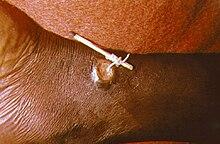Introduction
Guinea Worm Disease (GWD) represents one of the most significant public health successes in recent history. This neglected tropical disease has been on a declining trajectory, thanks to concerted global efforts to eradicate it.
The History of Guinea Worm Disease
Historically, GWD has plagued populations in Africa and some parts of Asia. The disease is caused by the parasitic worm Dracunculus medinensis, which is transmitted through contaminated water sources.
Why It Went Neglected
Despite its severe impact on afflicted communities, GWD received little attention until recent decades. A lack of funding and research contributed to this neglect, resulting in a vicious cycle of poverty and disease.
Current Status and Progress
In recent years, the world has made remarkable strides towards eradicating GWD. Thanks to the efforts of the Carter Center and various international organizations, the number of reported cases has dropped dramatically.
Community Engagement and Education
One of the keys to the success of Guinea Worm eradication is community education. Individuals in affected areas are being educated on the importance of using safe drinking water and filtering their water supplies.
The Role of Technology
Technological advancements also play a significant role in tracking and managing the disease. Mobile technology has enabled more efficient monitoring and reporting of cases, facilitating a swift response to outbreaks.
Challenges Ahead
Despite significant progress, challenges remain in the final push towards eradication. Access to remote areas, socio-cultural factors, and overcoming misinformation are ongoing battles that must be addressed.
A Call for Continued Action
As we approach the potential eradication of Guinea Worm Disease, sustained effort is essential. Continued funding, research, and community involvement will be crucial to ensure that GWD is consigned to history.
Learn More
To delve deeper into the history and ongoing efforts to eradicate Guinea Worm Disease, visit The Borgen Project.

